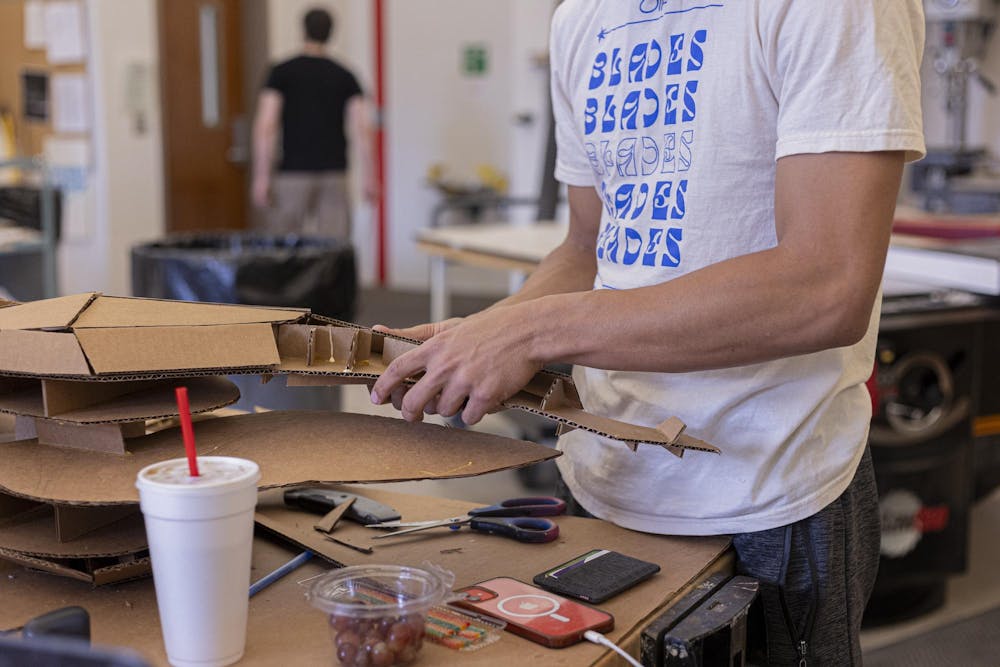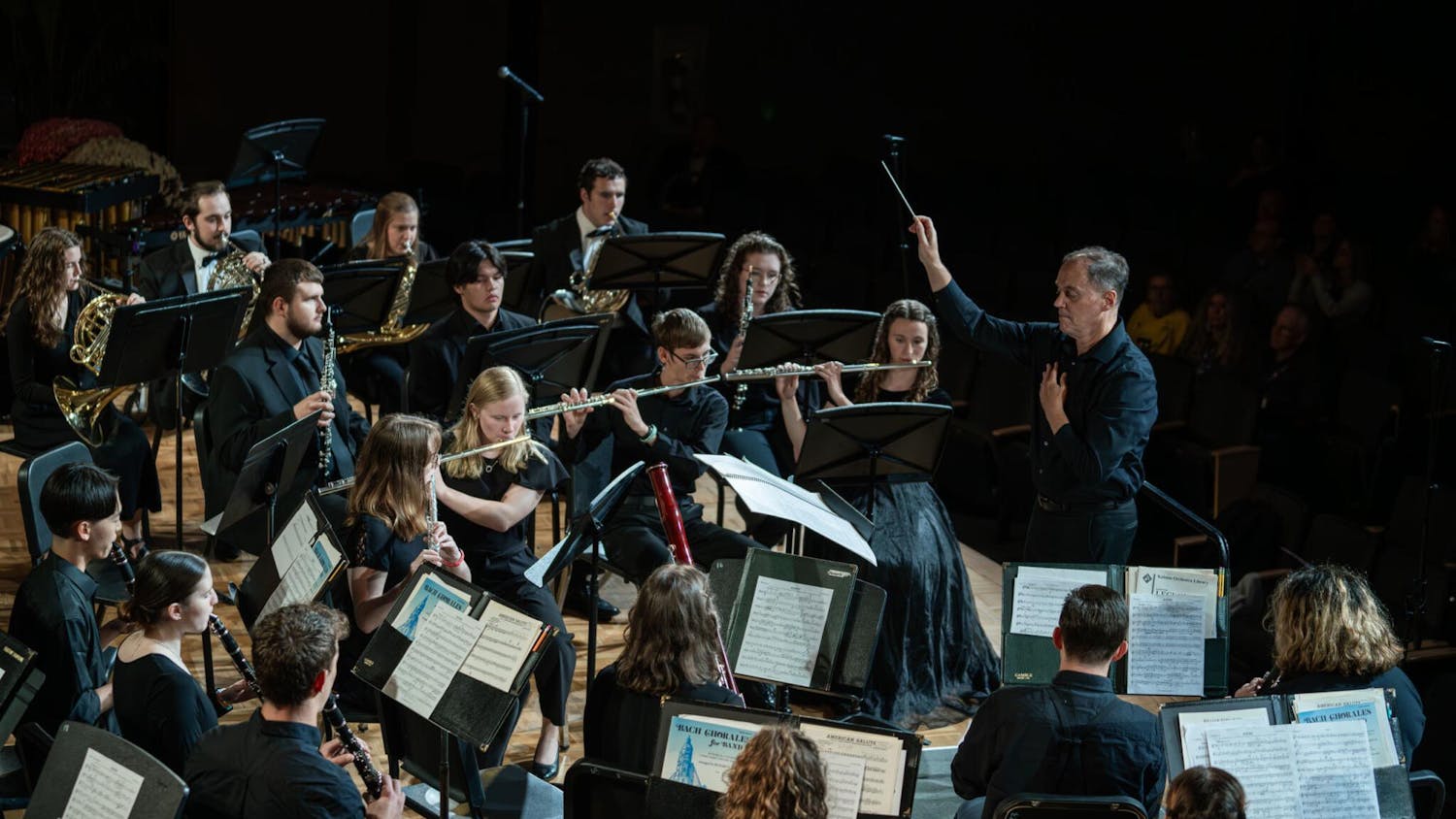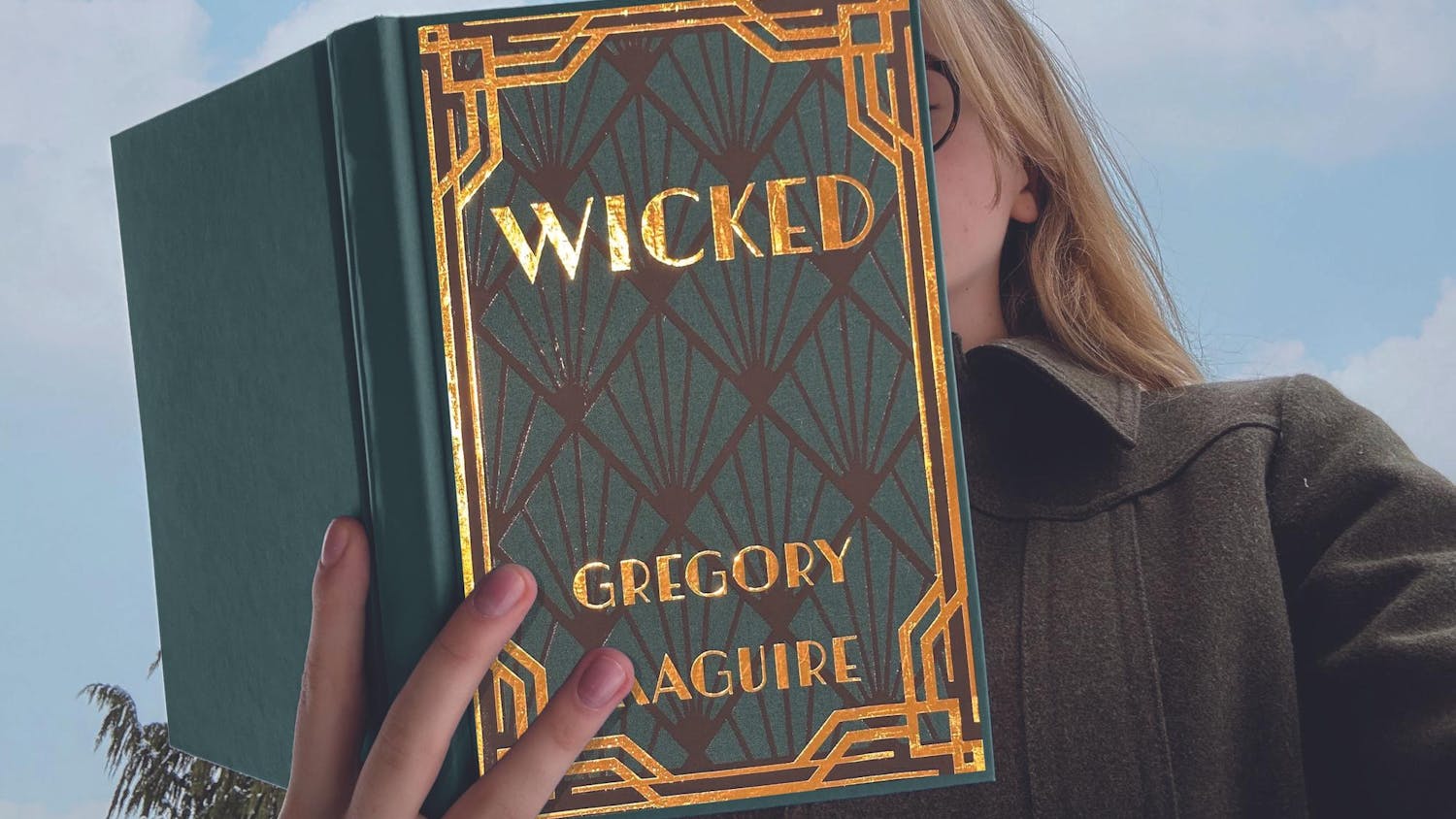If you were an animal, which one would you be?
This was the question the 3D design students were faced with for their final project. They were given the assignment to sculpt a self-portrait, but with a twist: it had to be an animal.
The supplies given to them were cardboard and glue to make a monochromatic project. The only restrictions Jeremie Riggleman, associate professor of art and director of the Modelle Metcalf Visual Arts Center Gallery, gave his students were no hot glue, glitter or spray paint.
Otherwise, students could buy whatever materials they wanted. Some students chose to buy extra materials to enhance their project.
Senior Sophia Diller, a graphic arts major, used black fabric for her raven sculpture. She put wire feet on the bird and planned to deck it out with sparkly jewelry. Junior graphic design major Grace Heredia also bought extra material for her project. She made a red panda, wrapping its raised arms in yarn and brushing it out to create fur.
Others chose to make theirs completely out of cardboard. Senior Elena Delzer, an illustration major, chose to make a cat in action for her self-portrait.
“I'm pretty independent, pretty quiet; maybe keep to myself, but I'll also come and interact with you,” Delzer said. “And I chose a cat that was in action because I feel like I'm definitely in action, and I’m always trying to get things done (and) stay on top of things. I'm definitely not a cat that's just lying on the ground—It just felt like the natural option for me.”
At the end of the April 24 class session, she was putting the finishing touches on the cat. She fine-tuned the ears and wanted to “cute-ify” the face.
Delzer enjoys telling stories through her art, which is part of the reason she made her cat an active figure, jumping into the air. She wanted people to see the texture of the base, think about grass, and ask where the cat might be going. Her hope was that a story would take form in the viewer’s mind as they looked at her piece.
Although not used to working with three-dimensional projects, Delzer said she enjoyed working with cardboard and savored the process during her last year at Taylor.
Sophomore Aspen Postma, a pre-art therapy major, also said she was not used to working in three dimensions, but she still made the piece her own.
Postma’s self-portrait was a newt made from a cardboard skeleton combined with paper mache. She typically enjoyed using book paper for her art projects, a technique she managed to incorporate into her 3D project by making the book paper into paper mache.
She drew dancing figures on her newt’s back in poses of her day-to-day activities. She said the contrast between the newt’s ability to be in the water and on the land resonated with her.
“In my own life, I'm one thing and then I'm a different thing, and it's very polarizing sometimes,” Postma said. “But just trying to figure out that balance for me is what I've been focusing on this year.”
Postma said she learned a lot about herself by working on self-portraits in her own time. She likes to apply her discoveries about herself to her classwork.
Delzer said Riggleman’s experience with 3D art was helpful and that he made the class fun. She added that He wanted them to think outside of the box, to problem-solve and to be open to creativity.
Riggleman encouraged them to think about how their project represented them.
“It prompts students to look inside themselves,” Riggleman said. “It asks them to reflect on who they are. It's reflective because it's a self-portrait. They're taking a close look at themselves, their lives, their likes and their dislikes—their personality. It's a way for them to express themselves in a meaningful way.”
Rather than walking them through how to make an animal, he gave them the basic structural techniques as building blocks for their project.
Cardboard cutouts in the corner of the classroom had square texture swatches to demonstrate the different ways to twist, cut or tear the cardboard, and each texture square had a title.
“Domino” depicted small pieces of cardboard overlapping each other to make a shingle-like texture. “Chaotic Rage” had a bumpy texture with little scraps of cardboard sticking out in different directions. Other people’s textures included strips, curls, curlicues and blocks.
Delzer said she learned to give herself permission to be patient with her project as she worked through the different aspects. She took the time to work with her hands, letting the glue set as she let herself relax into the project.
As Delzer and her fellow students finished their projects, they finalized the answer to the question, “What animal are you?”





